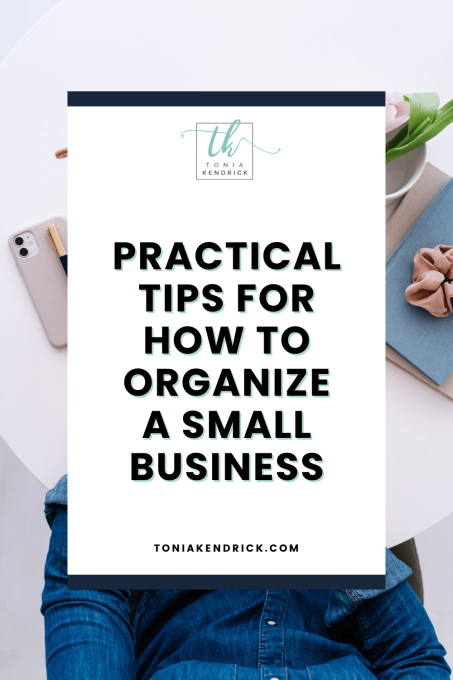Practical Tips for How to Organize a Small Business
Are you feeling overwhelmed trying to keep all the balls in the air with your small business? I totally get it. From juggling tasks and files to keeping up with endless documents, it’s a lot for any business owner, especially when you’re flying solo.
When I feel overwhelmed, it’s usually because some aspect of my business is disorganized.
So I got to work implementing a system. Depending on the day, it may be a system for managing tasks or files. Or handling customer interactions.
You many think that organizing is not the best use of your valuable time. But it’s such a stress reducer. And it allows you to focus on the important things. Like growing your business and serving your customers.
In this post, I’m going to share some of my best tips for bringing order to the chaos.
We’ll explore practical steps, tools, and strategies that I’ve found incredibly helpful in my own journey as a solopreneur. Whether it’s about managing paperwork, streamlining tasks, or enhancing customer interactions, I’ve got you covered. So, if you’re ready, let’s dive into the world of small business organization together!
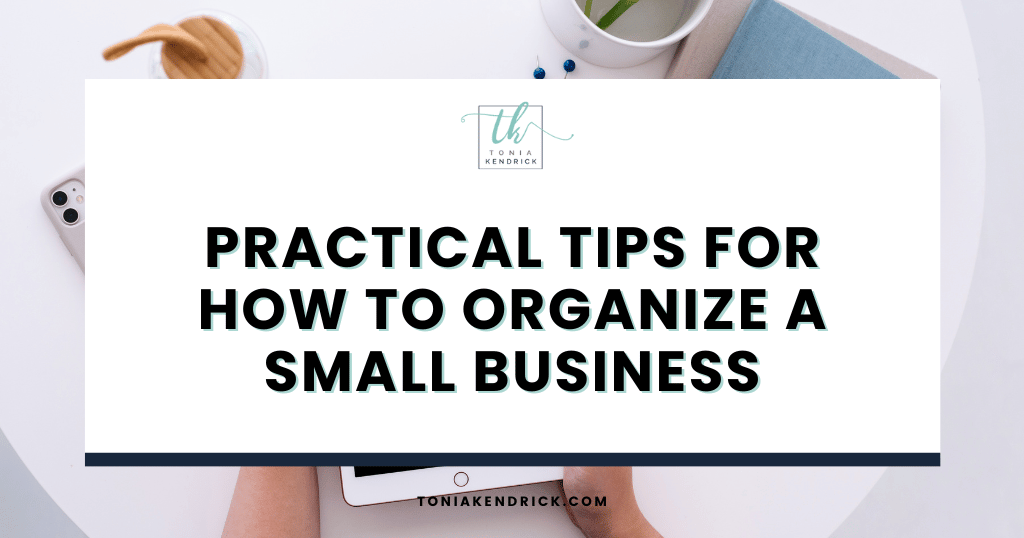
This post contains affiliate links, which means I receive a small commission if you make a purchase using this link. For more information, see my full disclaimer here.
A Detailed Explanation on Streamlining Your Small Business
Let’s break this down, shall we? I know firsthand how overwhelming it can feel when every surface of your office is covered in papers, and your digital files are a maze you dread to navigate. But here’s the secret sauce to turning that chaos into a calm, organized space that lets you propel your business forward.
Finding the Right Tools and Software
First up, let’s talk about the digital side of things. Have you ever spent hours searching for a document on your computer? It’s like looking for a needle in a haystack, right?
This is where the magic of cloud storage and organization tools comes into play.
Platforms like Google Drive and Dropbox have saved me on more than one occasion. Imagine having all your files and documents neatly organized in folders that you can access from anywhere at any time. And the best part? You can share them with your team or clients in just a few clicks.
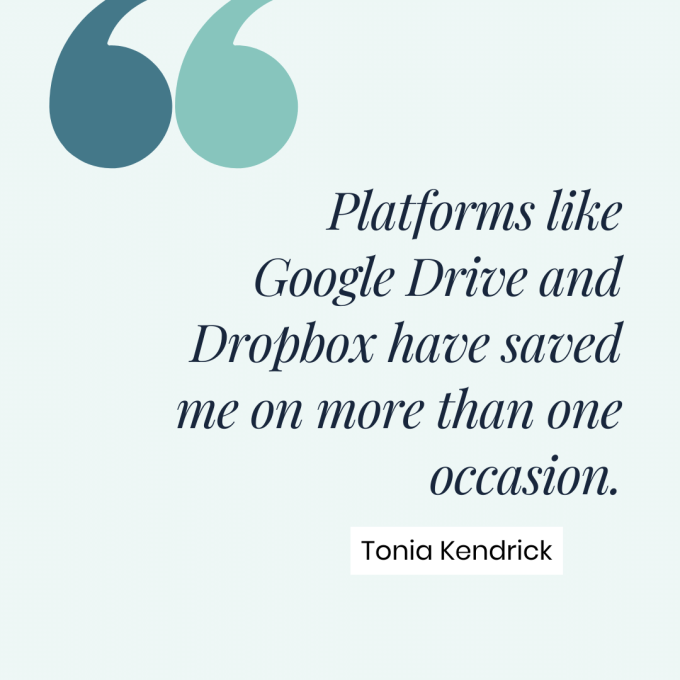
Tackling Physical Clutter
Now, onto the physical clutter.
Take a look around your workspace and identify areas that need decluttering.
You know those piles of paper I mentioned earlier? Here’s a little trick I embraced a long time ago: go digital wherever possible.
But for those essential paper files, a good old-fashioned filing cabinet can work wonders. And if you don’t have the space for a filing cabinet, a small file box or even a file drawer in your desk will do just fine.
But be sure to label those folders and files. It’s not just about tidying up; it’s about creating a space that allows your creativity and productivity to flourish.
Streamlining Tasks and Time Management
And let’s not forget about our to-do lists. As business owners, we wear so many hats that it can sometimes feel like we’re juggling with too many balls in the air.
This is where a good task management tool comes into play. Assign tasks, set deadlines, and track progress. It’s all about making the most of your valuable time so you can focus more on what you love doing.
Depending on the unique challenges and needs of your small business, there are a variety of approaches you can take to enhance your organizational strategy further.
So keep reading for some key areas that have significantly helped me and might just be the solution you’ve been looking for, too.
Optimizing Your Workspace
Creating a workspace that inspires productivity and joy is crucial. It’s not just about a clean desk; it’s about creating an environment that energizes you.
Consider the layout of your office space, the ergonomics of your furniture, and even the little personal touches that make it uniquely yours.
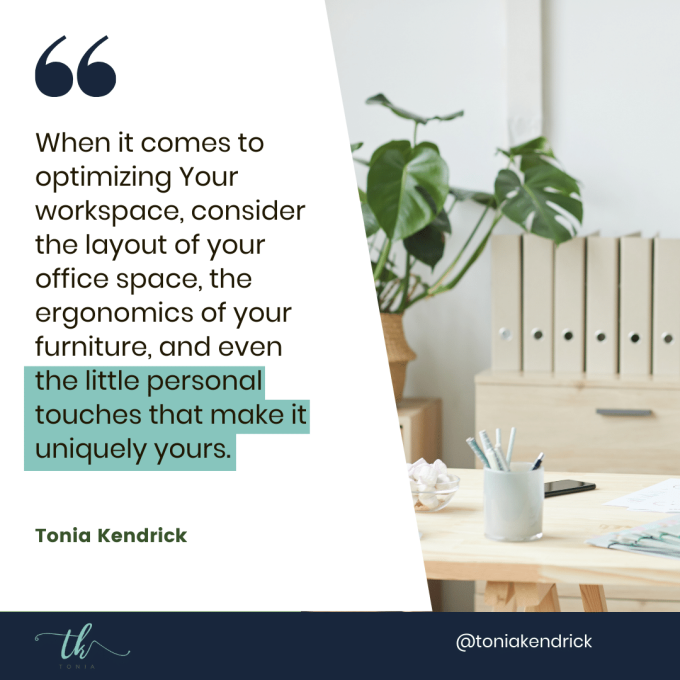
Managing Customer Relationships
In the heart of every business are the customers – because without customers, you don’t have a business.
Using a Customer Relationship Management (CRM) tool can transform how you interact with your customers. It’s not just about keeping track of their details; it’s about building relationships.
A good CRM system can help you remember important details about your customers, track communications, and even automate certain tasks. It’s like having a personal assistant dedicated to your customer relations.
Time Blocking and Prioritization
When I started using time blocking (oh so many years ago!), it was a revelation.
If you aren’t familiar with it, time blocking is a method where you segment your day into blocks of time dedicated to specific tasks or types of work. This could mean setting aside specific hours for creative work, administrative tasks, and meetings. It helps create a rhythm to your workday and ensures that you’re not only productive but also have time for yourself.
And prioritization is what makes time-blocking work so well. Prioritizing means deciding which tasks are vital and tackling them first. It’s about being honest with yourself about what needs attention now and what can wait.
By exploring these areas, you can create a more organized, efficient, and enjoyable business environment. The goal here isn’t just to be busy but to feel productive and fulfilled.

Maintaining Your Online Presence
In today’s digital age, having a strong social media presence isn’t just nice to have; it’s necessary. But let’s be real: managing social media can be a full-time job in itself.
That’s where scheduling tools and content calendars come in handy. They allow you to plan your posts in advance, ensuring you maintain a consistent and engaging online presence without it eating up all of your time.
Automating Repetitive Tasks
Now, let’s talk about automation.
I know it might sound a bit impersonal at first. But automating repetitive tasks can free up so much of your time, allowing you to focus on the aspects of your business that truly need your personal touch.
Whether it’s invoicing, canned email responses, or social media posts, there are lots of tools out there that can help streamline these processes.
Embracing automation doesn’t mean losing the personal touch; it means enhancing your efficiency so you can be more present for the tasks and people that matter most.
Planning for Growth
Finally, as you organize and streamline your current business processes, it’s important to keep one eye on the future.
Effective organization isn’t just about managing what you have now; it’s about laying the groundwork for where you want to go.

This includes setting clear goals, creating scalable systems, and even considering how you might expand your team or offerings in the future.
It also includes creating a strategic plan that outlines your vision, objectives, and action steps. Then, regularly review and adjust your plan to ensure you’re on the right track for long-term success.
Every step you take to organize your business today is a step towards the growth and success you’re dreaming of tomorrow.
By focusing on these areas, you’ll not only improve the day-to-day operations of your small business but also set yourself up for long-term success.
I firmly believe that organization is the foundation upon which thriving businesses are built, and with these strategies, you’re well on your way to creating a business that not only survives but flourishes.
Final Thoughts on How to Organize a Small Business
So there you have it, my friend. We’ve explored the ins and outs of organizing a small business, and I hope you’re feeling inspired and a bit more at ease.
Keep in mind that organization isn’t about perfection; it’s about creating a system that works for you. One that brings clarity, efficiency, and, yes, even a bit of joy into your daily grind.
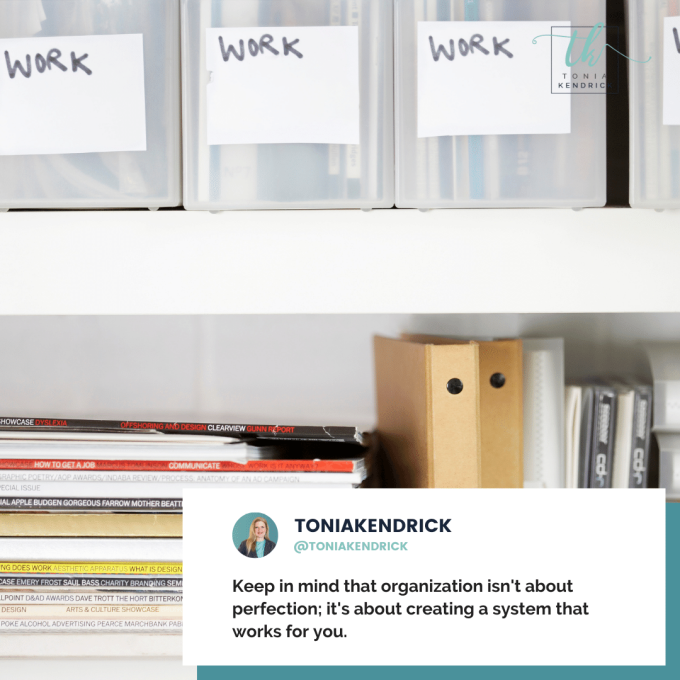
I want to leave you with this thought: every small step you take toward organizing your business is a step in the right direction.
It’s okay if things aren’t picture-perfect overnight. What matters is that you’re moving forward, learning, and growing along the way.
So keep at it.
FAQs: Tidying Up Loose Ends
Q: What if I’m too overwhelmed to start organizing?
A: It’s completely normal to feel overwhelmed, especially when things have piled up. Start small—one drawer, one digital folder at a time. Progress, not perfection, is what we’re aiming for. Every little bit helps and adds up to big changes.
Q: How often should I reassess my organizational systems?
A: Your business is constantly evolving, so it’s good practice to reassess your systems every few months. What worked for you at the start of the year might not be as effective a few months later. Stay flexible and adjust as needed.
Q: Can I organize my business on a tight budget?
A: Absolutely! Many of the most effective organizational tools and strategies don’t have to cost a dime. It’s more about creativity and commitment. Use what you have, get creative with solutions, and remember, often, the simplest system is the most effective.
Q: How do I know which tasks to automate or delegate?
A: Consider automating or delegating tasks that are repetitive, time-consuming, and don’t necessarily require your unique skills. This frees you up to focus on areas where you truly shine and add value to your business.
Q: What’s the best way to handle digital clutter?
A: Digital clutter can be just as big a problem as physical clutter. Start small. Unsubscribe from unnecessary emails, use folders to organize files, and regularly review and delete what you no longer need. It’s like digital spring cleaning!
Remember, organizing your business is a process, one that’s unique to you and your vision. There will be days when it feels like you’ve taken two steps forward and one step back, and that’s okay. It’s all part of the process. The important thing is that you take those steps.
So, take a deep breath, roll up your sleeves, and dive in. You’ve got this.

More productivity & systems posts that you might love:
FREE Biz Planning Workbook

Download your free printable Business Planning Workbook for solopreneurs. Set your goals. Make your plans. Stay focused!





